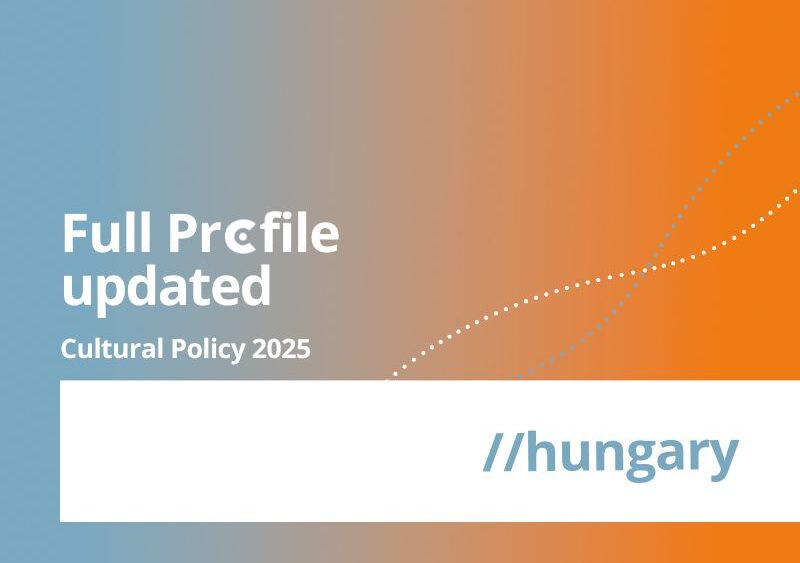A new, updated Cultural Policy Profile for Hungary has been published on the Compendium website and paints a worrying picture of cultural policy developments in Hungary.
Special thanks go to our Hungarian expert Péter Inkei and Luca Kristóf for updating and compiling the profile.
Below are some highlights of cultural policy developments in Hungary:
- In early 2025, following the establishment of an Office for the Defense of Sovereignty in 2024, the government plans to introduce a law to protect sovereignty against organizations that receive foreign funding (including EU grants), including media critical of the government. These organizations will be banned from accepting foreign funding.
- Media pluralism in Hungary remain severely compromised by government control, suppression of independent voices, and legislative constraints, raising significant concerns about democratic discourse in the country. This is partly underlined by the Hungarian country chapter of the 2024 Rule of Law Report of the European Commission.
- State Intervention in Culture: Hungary’s cultural policy aligns with the ‘architect model’, where the state plays a crucial role in supporting cultural production. This model indicates that the government actively intervenes to promote and sustain cultural initiatives, which is essential given the limited market dynamics in the cultural sector.
- Continued Shift in Cultural Focus: Hungary’s cultural policy continues to shift from European integration towards a focus on national traditions and conservatism. This change reflects a broader ideological shift within the governing party, emphasizing the importance of national identity and the culture of ethnic Hungarians living in neighboring countries.
- The cultural market in Hungary is identified as relatively weak, primarily due to the small size of the Hungarian-speaking audience and low levels of internationalization. This situation has resulted in a reliance on state support, as private investment in the arts has not developed significantly since the post-communist era.
- Debate Over Cultural Investments: While the government’s large cultural investments are seen as positive, they have also sparked significant debate. Critics argue that these investments may favor certain cultural narratives or groups, potentially marginalizing others and leading to a lack of diversity in cultural expression.
- Neglect of Social Inequalities: Despite the potential for culture to play a role in reducing social inequalities, this has not been prioritized by the government. Many NGOs are stepping in to address these issues, but the lack of governmental support for integrating culture into social policy remains a significant concern.
In summary, the country profile outlines a complex landscape of cultural policy in Hungary, characterized by state intervention, a focus on national identity, and a drive for competitiveness in cultural initiatives.


Comments are closed.